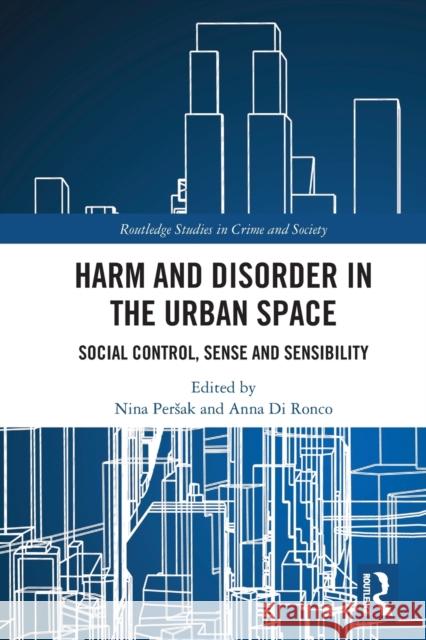Harm and Disorder in the Urban Space: Social Control, Sense and Sensibility » książka
Harm and Disorder in the Urban Space: Social Control, Sense and Sensibility
ISBN-13: 9780367552657 / Angielski / Miękka / 2023 / 202 str.
Harm and Disorder in the Urban Space: Social Control, Sense and Sensibility
ISBN-13: 9780367552657 / Angielski / Miękka / 2023 / 202 str.
(netto: 184,63 VAT: 5%)
Najniższa cena z 30 dni: 191,37
ok. 22 dni roboczych
Dostawa w 2026 r.
Darmowa dostawa!
Bringing together an international group of authors, this book addresses the important issues lying at the intersection between urban space, on the one hand, and incivilities and urban harm, on the other. Progressive urbanisation not only influences people’s living conditions, their well-being and health but may also generate social conflict and consequently fuel disorder and crime.Rooted in interdisciplinary scholarship, this book considers a range of urban issues, focussing specifically on their sensory, emotive, power and structural dimensions. The visual, audio and olfactory components that offend or harm are inspected, including how urban social control agencies respond to violations of imposed sensory regimes. Emotive dimensions examined include the consideration of people emotions and sensibilities in the perception of incivilities, in the shaping of social control to deviant phenomena, and their role in activating or suppressing people’s resistance towards otherwise harmful everyday practices. Power and structural dimensions examine the agents who decide and define what anti-social and harmful is and the wider socio-economic and cultural setting in which urbanites and social control agents operate. Connecting with sensory and affective turns in other disciplines, the book offers an original, distinctive and nuanced approach to understanding the harms, disorder and social control in the city.An accessible and compelling read, this book will appeal to those engaged with criminology, sociology, human geography, psychology, urban studies, socio-legal studies and all those interested in the relationship between urban space and urban harm.
Bringing together an international group of authors, this book addresses the important issues lying at the intersection between urban space, on the one hand, and incivilities and urban harm, on the other. Progressive urbanisation not only influences people’s living conditions, their well-being and health but may also generate social conflict and consequently fuel disorder and crime.
Rooted in interdisciplinary scholarship, this book considers a range of urban issues, focussing specifically on their sensory, emotive, power and structural dimensions. The visual, audio and olfactory components that offend or harm are inspected, including how urban social control agencies respond to violations of imposed sensory regimes. Emotive dimensions examined include the consideration of people emotions and sensibilities in the perception of incivilities, in the shaping of social control to deviant phenomena, and their role in activating or suppressing people’s resistance towards otherwise harmful everyday practices. Power and structural dimensions examine the agents who decide and define what anti-social and harmful is and the wider socio-economic and cultural setting in which urbanites and social control agents operate. Connecting with sensory and affective turns in other disciplines, the book offers an original, distinctive and nuanced approach to understanding the harms, disorder and social control in the city.
An accessible and compelling read, this book will appeal to those engaged with criminology, sociology, human geography, psychology, urban studies, socio-legal studies and all those interested in the relationship between urban space and urban harm.











